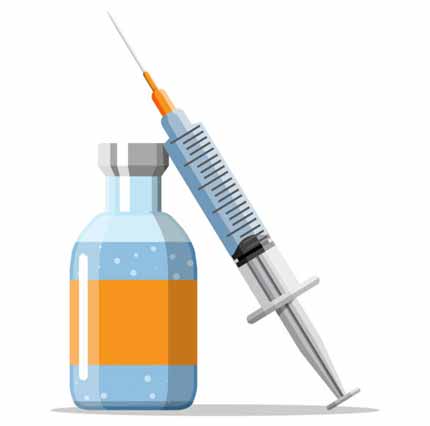If you’re going to give yourself an injection, choosing the right syringe needle is essential to avoid unnecessary pain. Syringe needles are labeled according to the amount of liquid they can hold. You can choose one with a capacity of three cc or less, depending on your needs. Choosing the right syringe helps prevent unnecessary pain, since you won’t have to keep injecting yourself more than once.
Choosing a syringe

When choosing a syringe needle for injections, you should consider the gauge and the viscosity of the fluid you will be injecting. Choosing the wrong needle can be dangerous because it could result in unnecessary pain. However, if you take the time to learn about syringes, you can avoid pain by using the proper needle for your injections.
The first thing to consider when buying a syringe needle is its gauge. The needle gauge is the size of the lumen in the syringe. The higher the gauge, the smaller the lumen will be. This makes high-gauge needles better for deep injections.
There are also other factors that should be considered when choosing a needle. The gauge of the needle determines the amount of medication that can be injected into the patient. It should have a minimum of.8 inches (2 cm) to be effective. A needle that is too long may cause pain or puncture the skin.
Choosing a needle gauge
Choosing the correct syringe needle gauge for a particular application is a critical step in injection therapy. Not only does it ensure the safety of the patient, but it can also reduce the risk of complications and adverse reactions. To determine the ideal needle gauge for a specific application, consider the viscosity of the liquid to be injected, the needle length, and the number of injections required.
There are three basic types of needles. The first type is for standard injections. These use needles with a gauge of 26 or 27. The lower gauge number will cause less pain when passing through the skin, while the higher gauge needles are used for injections into areas with thicker skin or for viscous drugs. Needles with a higher gauge are longer, so they’re better suited for deep injections. navigate to this website.
Another type of injection is called subcutaneous. Here, a needle enters the tissue at a 45-90 degree angle. The gauge range is 27 to 19 and the length is usually 1/2 to five-eighths of an inch.
Choosing a permanently attached needle
When using syringes, it is important to choose the correct needle. There are several different types and lengths, but most of them have the same basic function: to transfer liquids and gases between two vessels. Some are blunt-ended, while others have sharp-edged points. The needles are manufactured with different materials, including stainless steel or PTFE.
For this study, NSP conducted focus groups in Tajikistan in May 2014. Participants were asked to describe the types of syringes they used, as well as the factors that influenced their choice. The focus groups were conducted in Tajik and Russian. Participants’ responses were transcribed and translated into English. After that, the files were imported into NVivo 10 for analysis.
Conclusion:
Another consideration in choosing a needle is its diameter and length. A shorter needle is better suited for injecting under the skin than a longer one. The needle length should be appropriate for the type of injection, such as intramuscular injections or subcutaneous injections. Depending on the medication, the needle should be able to penetrate the skin easily without causing pain.
